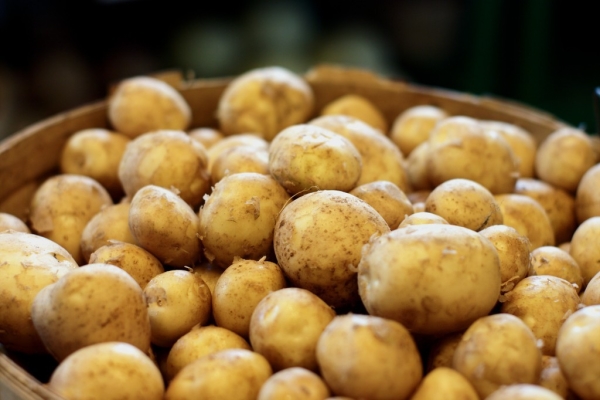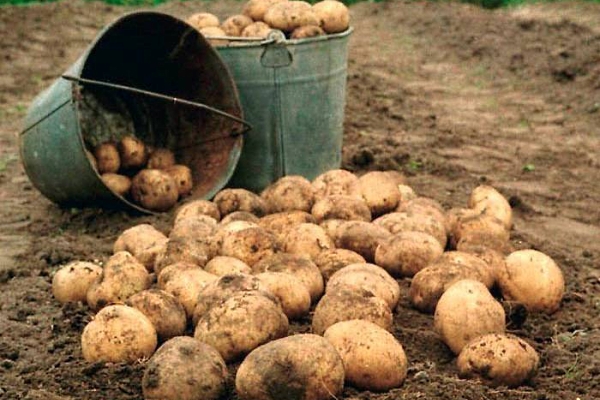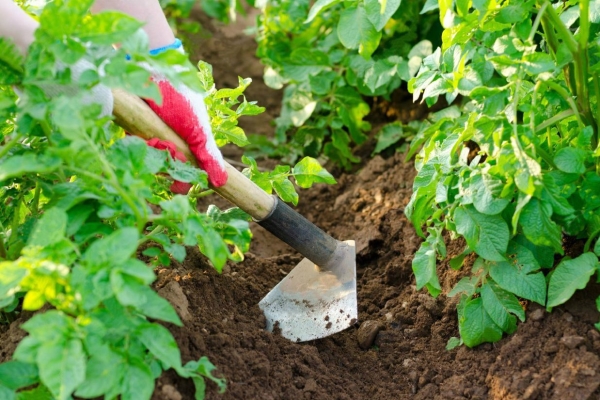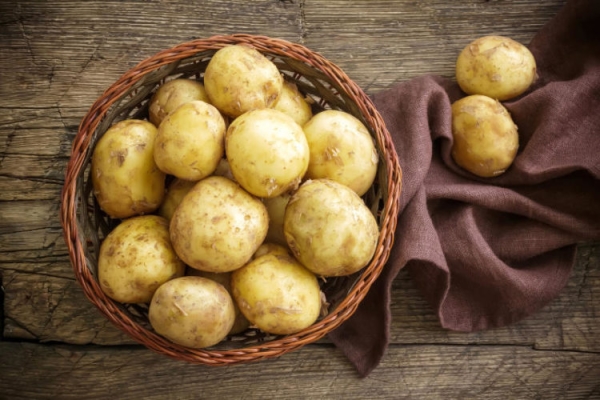Tasty, high-yielding, unpretentious in care, well kept - All these characteristics of the potato Santa, bred in Holland.
The variety is adapted for central Russia and has long gained popularity: it is cultivated both by large and small private agricultural companies.
Many gardeners plant Santa every year on their plots, but do not know what kind of variety.
Table of contents
Potato description
Sante launched by the Dutch company Agrico U.A and refers to the middle-early varieties, the ripening period is 80-90 days.
Bushes are medium and above average, compact, straight, many leaves grow on the stems. The flowers are small, white.
According to the description large tubers, oval-shaped, dense and smooth skin protects fruits from mechanical damage during storage and transportation. On the surface of the tuber are many eyes, but they are not deep and unobtrusive.
The pulp of Sante is pale yellow in color, the starch content is low, in the range of 10-15%.
Due to its high dry matter content, the variety is popular in catering establishments: fries and chips are most often cooked from it.

Characteristic variety
For several years of testing, the yield of potatoes ranged from 24 to 57 t / ha. Santa is the first officially registered variety, possessing complex resistance to viral diseases.
Plant is prone to phytophthorabut tubers are resistant.This variety can be cultivated without the use of chemicals, thanks to its dense structure, cleaning with the help of mechanical devices is possible.
Characteristics of potato varieties Sante, preparation for germination:
Agrotechnology
Santa refers to the middle-early varieties, mature tubers are formed 80-90 days after planting. Before landing, to hold any special preliminary measures are not necessary.
To get potatoes with the highest taste, follow a few rules:
- Every five years, spend a change of planting material.
- Plant tubers in the ground, where legumes, cabbage or radish used to grow.
- Organic and mineral fertilizers are applied in moderation and do not overdo it.
- The optimum temperature of the soil for the growth of Santa is 27-29 degrees. With hotter weather, growth slows, and the aging period increases.
- Conduct all other care activities as you would for most other varieties.

Characteristics of growing Sante
The main condition of a rich harvest is high-quality sowing material.After harvesting potatoes in the autumn, take the tubers from the plants that gave the best yield. Potatoes should be healthy, measuring from 4 cm.
Fertilize the soil every two years in the fall. After the crop is harvested, the soil should be fertilized with manure or humus. Per 1 sq.m. the site will need 10 kg of manure or 5 kg of finished humus.
In the spring, as soon as the earth thaws, the garden should be dug deep. Before planting, once again loosen the ground so that the soil under the tubers becomes soft, loose and does not interfere with the growth of the roots.
If the ground is dry, hose it.. At a distance of 65 cm between the rows and 30 cm - from each other, dig holes 10 cm deep. Place the potato tuber and sprinkle gently with earth.

Basic care requirements
Potato Santa needs a constant supply of oxygen to the roots, so the earth must be regularly loosened.
In 5-6 days after disembarkation, loosen the soil, this will not only ensure the access of air, but also relieve weeds.After each watering or rain, repeat the procedure, but only after the water is absorbed.
When the first shoots reach 8-10 cm in height, they need to pile up for the first time, and after 20 days to repeat. Hilling in dry weather in the early morning or after sunset. Before and after hilling ground should be watered moderately.
When summer is dry and hot, potatoes should be watered more often., be guided by a condition of tops: if leaves start to wither, it means the plant urgently needs water.
The first dressing Santa spend 30 days after disembarkation. 10 sq.m. soil will require the following components: 100 g of urea, 200 g of superphosphate and 100 g of sulfate or potassium chloride. Dilute drugs in water and pour over potatoes.
Also, the plant responds well to bird droppings: take 10 kg of dry droppings per 10 square meters of the plot, dilute in 20 liters of water.

Harvesting Harvest
Drain the potatoes on the ground for 1-2 hours and then move them to storage sites. Optimum temperature for long-term storage makes 2-5 degrees, and relative humidity of air - 70-80%.
If you follow the simple rules, the potato Sante will delight the gardener with a generous and rich harvest, large, healthy tubers and excellent taste.
Thanks to unpretentiousness, good yield and ability for long storage, this the variety will be enjoyed by both private gardeners and professional farmers.
